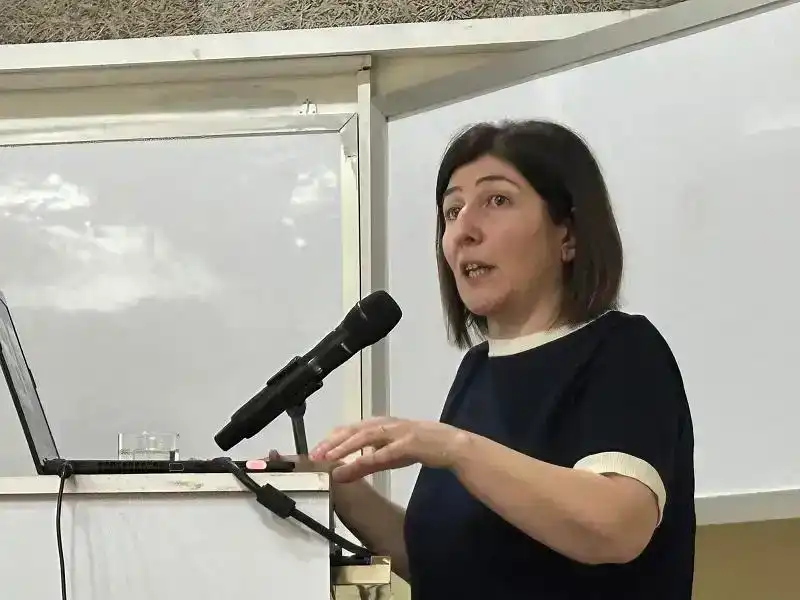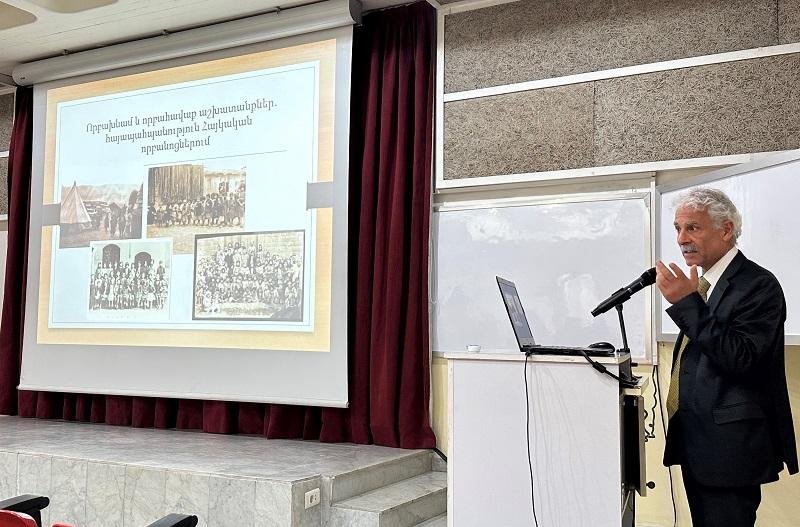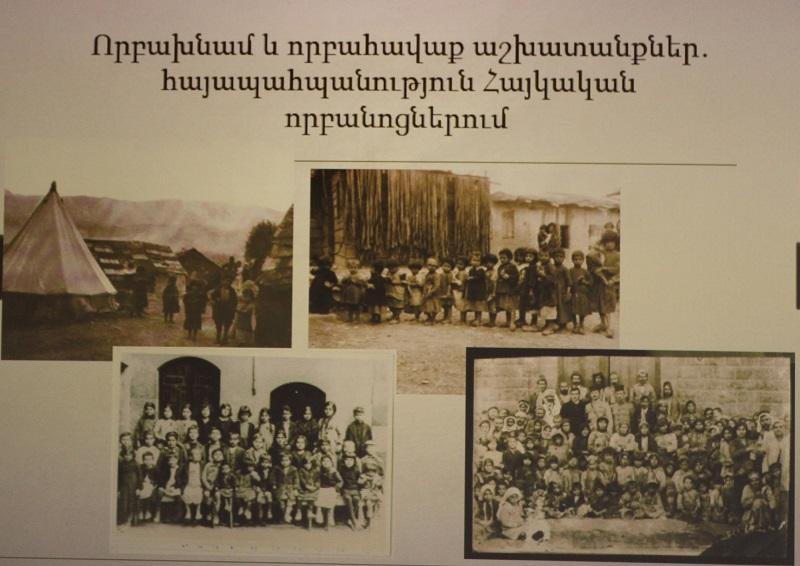
January 31, 2025- As part of its 70th-anniversary celebrations, Haigazian University, in collaboration with the Armenian Genocide Museum-Institute of Dzidzernagapert (Yerevan), hosted Dr. Narine Margarian for a lecture on the fate of Armenian Genocide orphans and the extensive efforts to save and reintegrate them into the Armenian nation.
In her hour-long lecture, Dr. Margarian emphasized that alongside Alexandropol/Leninagan (now Gyumri) often referred to as the “City of Orphans”, Lebanon became a major refuge for thousands of Armenian orphans. These children were sheltered in various orphanages, supported by Western humanitarian organizations such as the Near East Relief, as well as AGBU and other Armenian charitable institutions.
Dr. Margarian elaborated on the Ottoman authorities’ policies regarding Armenian orphans, detailing the mechanisms they employed and the objectives they sought to achieve. She explained the profound psychological shifts these children experienced between 1915 and 1920, as they were forcibly separated from their families and subjected to Turkification policies under the Committee of Union and Progress (CUP). In Turkish orphanages, they underwent systematic assimilation, including name and religion changes and the suppression of the Armenian language, their mother tongue.
However, following the Allied victory in World War I, many of these orphans were rescued and relocated to Armenian orphanages, marking a critical stage in their identity restoration. Dr. Margarian highlighted the relentless efforts of Armenian organizations, compatriotic unions, and individuals, often with the support of the Allied authorities, to save Armenian children who had been kidnapped, placed in Turkish households, or left in the care of Arab tribes by desperate parents hoping for their survival.
Despite these efforts, Dr. Margarian noted with sorrow that many Armenian orphans never returned to their nation, becoming permanently estranged from their heritage.

